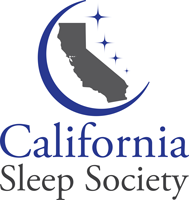Can we continue to diagnose REM sleep behavior disorder the way we do?
By Emmanuel During, MD
Stanford Center for Sleep Sciences and Medicine
Stanford University
Few topics in sleep medicine have in the recent years gained as much attention and scientific insights than REM sleep behavior disorder (RBD). RBD affects more than 1% of adults over 40 years of age and often results in injurious episodes of dream-enactment during REM sleep.1 Dreams often involve vigorous arguments or fights during which patients may shout, punch, kick and injure their bed partners or themselves by hitting walls, furniture or by falling out of bed. More concerning, RBD is in most adult cases an early sign of neurodegeneration, since at least 80% of patients will develop during their lifetime Parkinson’s disease or dementia with Lewy bodies. Reliable and accurate diagnosis of RBD is of critical importance as if diagnosed early, patients may be amenable to neuroprotective treatments.2
Despite these critical insights and hopes for disease-modifying drugs, one area in RBD is lagging behind, that of diagnostics. Although RBD is relatively common, almost half patients are unaware of their condition, and only a minority of them will act out their dreams on an overnight PSG.3 The current definition of RBD relies on the polysomnographic finding of REM sleep without atonia (RWA), or excessive electromyographic (EMG) activation during REM sleep. The AASM scoring manual does not specify any “ratio” for RWA to be considered abnormal though. Mentioned in the core text of the ICSD-3 only, this ratio remains unknown to most sleep medicine providers, and in their defense, may be subject to interpretation4: more than 27% of REM sleep scored in 30-second epochs must show any (phasic/tonic) EMG activity combined with bilateral phasic activity of the flexor digitorum superficialis muscles.5 In practice, scoring RWA can become a daunting task. EMG augmentation during REM sleep is a common finding on a sleep study, particularly in patients with obstructive sleep apnea and in the elderly. Moreover, since over half a century, the definition of REM sleep has relied on EMG criteria that apply to normal populations, i.e., to individuals without RBD. This rule, when applied to patients with RBD, will favor stages of non-REM and wake over REM sleep. In short, this can lead to “understaging” REM sleep in these patients. When RBD is clinically suspected, more experienced technologists and clinicians need to waive this rule and delve into the delicate task of quantifying RWA, epoch-by-epoch, and mini-epoch by mini-epoch. Adding to the complexity of RBD evaluation, common medications such as serotonergic antidepressants and melatonin affect RWA, by increasing it or reducing it, respectively. In practice, this means that an individual with genuine RBD treated with melatonin may be diagnosed as not having RBD based on a “normal” sleep study. For all these reasons and until better diagnostic procedures are available for RBD, this disorder will likely be underdiagnosed.
Home wearable devices and machine-learning techniques are gaining new territories in the sector of health and medicine. They will inexorably also gain in precision compared to our conventional procedures. Epitomized by the recent application of the Apple Watch for in-home diagnosis of arrhythmia, at home, night-after-night monitoring by wearable devices present numerous advantages for detection of other episodic, paroxysmal disorders such as epileptic seizures and parasomnias. Applied to RBD, these technologies would not only allow large-scale population screening, but also individualized monitoring of response to treatments, and estimation of safety risk in vulnerable individuals, including those who have unwitnessed RBD episodes because they sleep alone or their bed partner sleeps through their episodes. Until such tools are validated, the single-night, in-lab, attended PSG will remain the gold-standard procedure for RBD. It is however clear that human-scored PSG not only lacks accuracy and reliability6 for the diagnosis of RBD but does not seem to be a viable option in today’s practice of sleep medicine. Automated scoring is not just inevitable. If well done, it could improve our diagnostic procedures, and serve not as a replacement but as a complement to human scoring. So rather than waiting for the private sector to lead the path, we encourage sleep providers, technologists, clinicians and scientists, to take an active role in this endeavor. Leveraging collaboration between the industry and healthcare sector can ultimately improve our practice of sleep medicine, and result in better care of our patients.
References
- Haba-Rubio J, Frauscher B, Marques-Vidal P, et al. Prevalence and determinants of Rapid Eye Movement Sleep Behavior Disorder in the general population. Sleep. 2018;41(2). doi:10.1093/sleep/zsx197
- Postuma RB, Iranzo A, Hu M, et al. Risk and predictors of dementia and parkinsonism in idiopathic REM Sleep Behaviour Disorder: a multicentre study. Brain. 2019;142(3):744–759. doi:10.1093/brain/awz030
- Fernández-Arcos A, Iranzo A, Serradell M, Gaig C, Santamaria J. The Clinical Phenotype of idiopathic Rapid Eye Movement Sleep Behavior Disorder at presentation: A study in 203 consecutive patients. Sleep. 2016;39(1). doi:10.5665/sleep.5332
- American Academy of Sleep Medicine. International Classification of Sleep Disorders, 3rd ed. (ICSD-3): Diagnostic and Coding Manual. 3rd ed. Westchester, IL: American Academy of Sleep Medicine; 2014.
- Frauscher B, Iranzo A, Gaig C, et al. Normative EMG values during REM sleep for the diagnosis of REM Sleep Behavior Disorder. Sleep. 2012. doi:10.5665/sleep.1886
- Bliwise DL, Fairley J, Hoff S, et al. Inter-rater agreement for visual discrimination of phasic and tonic electromyographic activity in sleep. Sleep. 2018. doi:10.1093/sleep/zsy080
